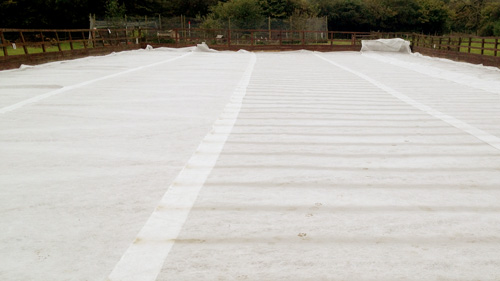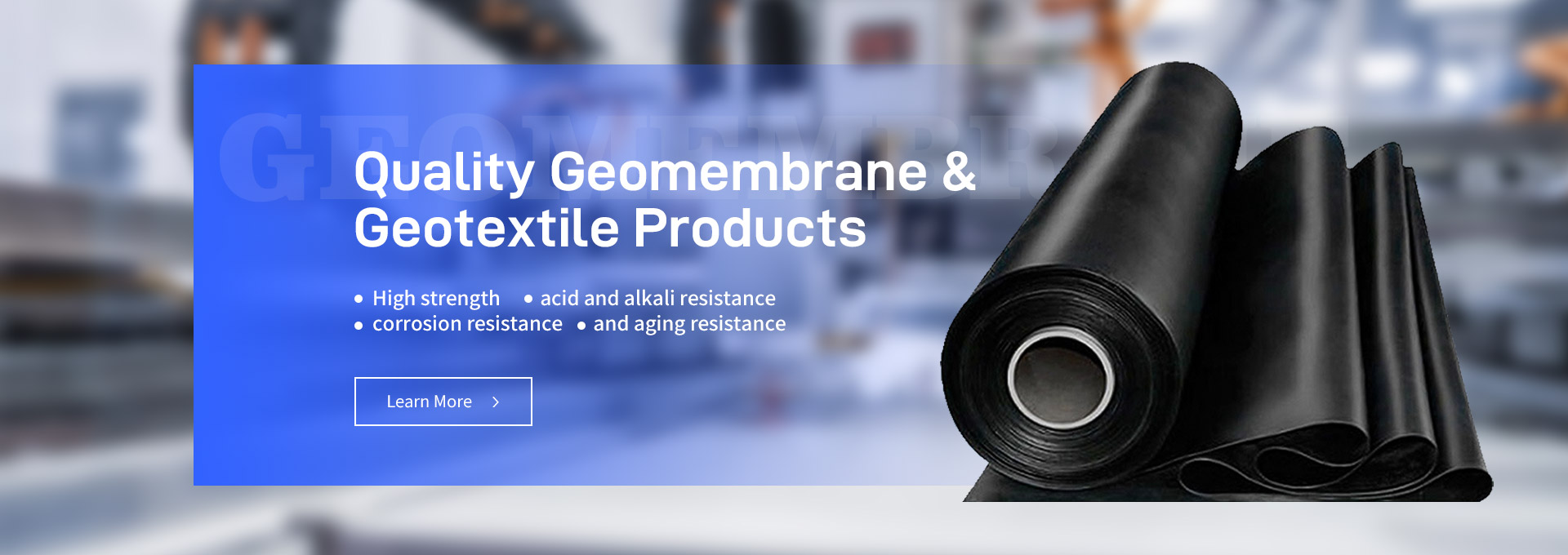Geotextiles play a crucial role in modern construction, especially in projects involving soil stabilization, drainage, and erosion control. These synthetic fabrics, which are designed to interact with soil, water, and other materials, offer a wide range of benefits. One essential aspect of working with geotextiles is understanding the various jointing methods used to connect pieces of geotextile fabric. The three most common methods are overlap, seam, and glue joints. Each of these methods has its specific advantages and applications, and understanding the differences can help you choose the most appropriate technique for your project.

1. Understanding Geotextile Materials
Before diving into the different jointing methods, it’s important to first understand what geotextile is and how it’s used in construction. Geotextile is a permeable fabric made from synthetic materials such as polypropylene, polyester, or polyethylene. It is primarily used in civil engineering applications, such as:
l Soil separation
l Erosion control
l Drainage improvement
l Reinforcement
The material allows water to pass through while providing filtration and separation, which is especially beneficial in roads, dams, and other infrastructure projects.
2. Overlap Jointing Method
The overlap method is one of the simplest and most commonly used ways to join geotextile sheets. In this method, two pieces of geotextile are laid out on the ground with their edges overlapping. The typical overlap distance ranges from 6 inches to 12 inches, depending on the project’s specifications.
Advantages of Overlap Jointing:
Ease of Installation: The overlap method is easy to implement and doesn’t require specialized equipment or adhesives.
Cost-Effective: This method is generally less expensive compared to other jointing techniques, making it ideal for projects with budget constraints.
Quick to Execute: It is a fast method that requires minimal preparation, making it suitable for large-scale installations where speed is essential.
Limitations:
Limited Strength: The overlap method does not create a particularly strong bond between geotextile sheets. As a result, it may not be suitable for projects requiring high tensile strength.
Water Flow Restrictions: The overlap can sometimes hinder water flow, especially in drainage applications, as water must pass through the layers of fabric.
3. Seam Jointing Method
The seam method involves sewing or welding the geotextile pieces together. This method is ideal when a stronger, more durable joint is required. Seaming is typically done using a heavy-duty sewing machine or specialized welding equipment, depending on the material of the geotextile.
Advantages of Seam Jointing:
High Strength: Seam jointing creates a much stronger bond compared to the overlap method. This is particularly useful in applications where high tensile strength is required, such as in reinforced embankments or erosion control projects.
Improved Water Flow: Seam jointing does not hinder water flow as much as the overlap method, making it ideal for drainage applications.
Durability: Sewn or welded seams can withstand more stress and are generally more durable, which is especially important in harsh environmental conditions.
Limitations:
Requires Specialized Equipment: The seam method requires either a heavy-duty sewing machine or welding equipment, which can increase the cost and time required for installation.
Skilled Labor: Proper installation of seamed joints requires skilled labor, as improper seaming can result in weak or ineffective joints.
4. Glue Jointing Method
Glue jointing, also known as adhesive bonding, is a relatively newer method that uses specialized adhesives or bonding agents to connect geotextile pieces. This method is often used when seaming is not feasible due to the type of material or in applications where a flexible joint is needed.
Advantages of Glue Jointing:
Versatile and Flexible: Glue jointing can be used on a wide variety of geotextile materials and is ideal for creating flexible joints that can withstand movement.
No Need for Heavy Equipment: Unlike seaming, glue jointing doesn’t require heavy machinery, making it suitable for smaller-scale projects.
Excellent for Waterproofing: Glue jointing provides a tight seal, which is useful in applications where waterproofing is critical.
Limitations:
Bonding Strength: Depending on the adhesive used, glue joints may not offer as strong a bond as seamed joints, especially in applications that require high tensile strength.
Curing Time: Adhesives often need time to cure fully, which can delay the project and make it less efficient than other methods.
Environmental Sensitivity: The effectiveness of adhesives can be influenced by environmental conditions such as temperature, humidity, and exposure to chemicals.
5. Choosing the Right Jointing Method
The choice of jointing method depends on several factors, including the intended application, material type, environmental conditions, and budget. Here's a summary to help you decide:
Overlap Joint: Best for projects where ease of installation and cost-effectiveness are top priorities, but tensile strength is not as critical.
Seam Joint: Ideal for applications that require high strength and durability, such as reinforcement and erosion control projects.
Glue Joint: Useful for applications where flexibility, waterproofing, and bonding versatility are needed.
6. Selecting the Best Geotextile
Choosing the best geotextile for your project is essential to ensuring that the jointing methods you choose will perform effectively. Look for geotextile materials that meet the specifications required for your project. The best geotextile should be durable, resistant to UV degradation, and capable of handling the stresses of your application, whether it’s soil reinforcement or drainage.
Conclusion
Geotextiles are versatile materials with numerous applications in construction, and the jointing method you choose plays a crucial role in ensuring the performance of the system. Whether you choose overlap, seam, or glue jointing, each method offers distinct advantages and is suitable for different types of projects. Make sure to select the best geotextile for your specific needs, and work with a trusted geotextile manufacturer to ensure that you get high-quality materials that will stand the test of time.

